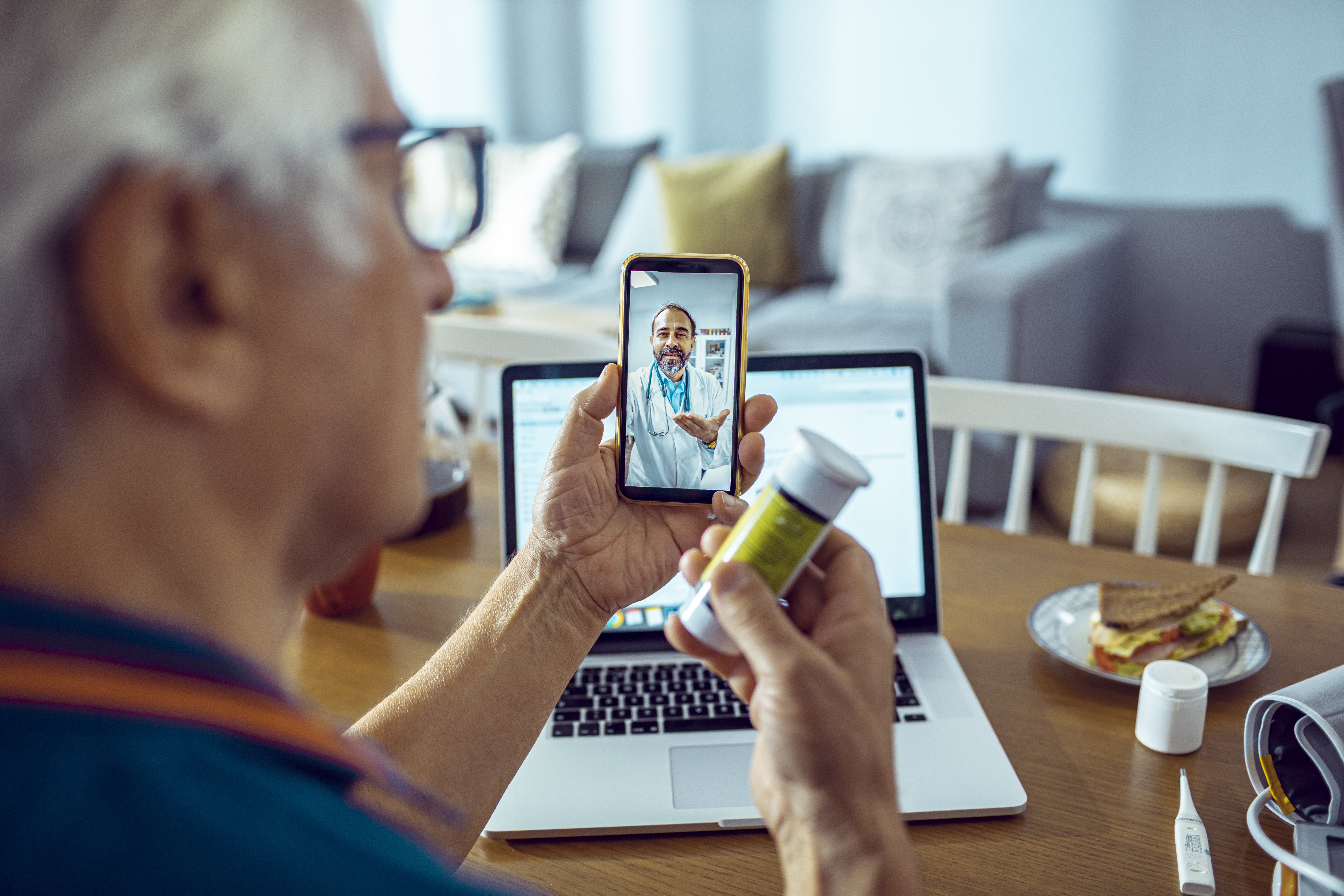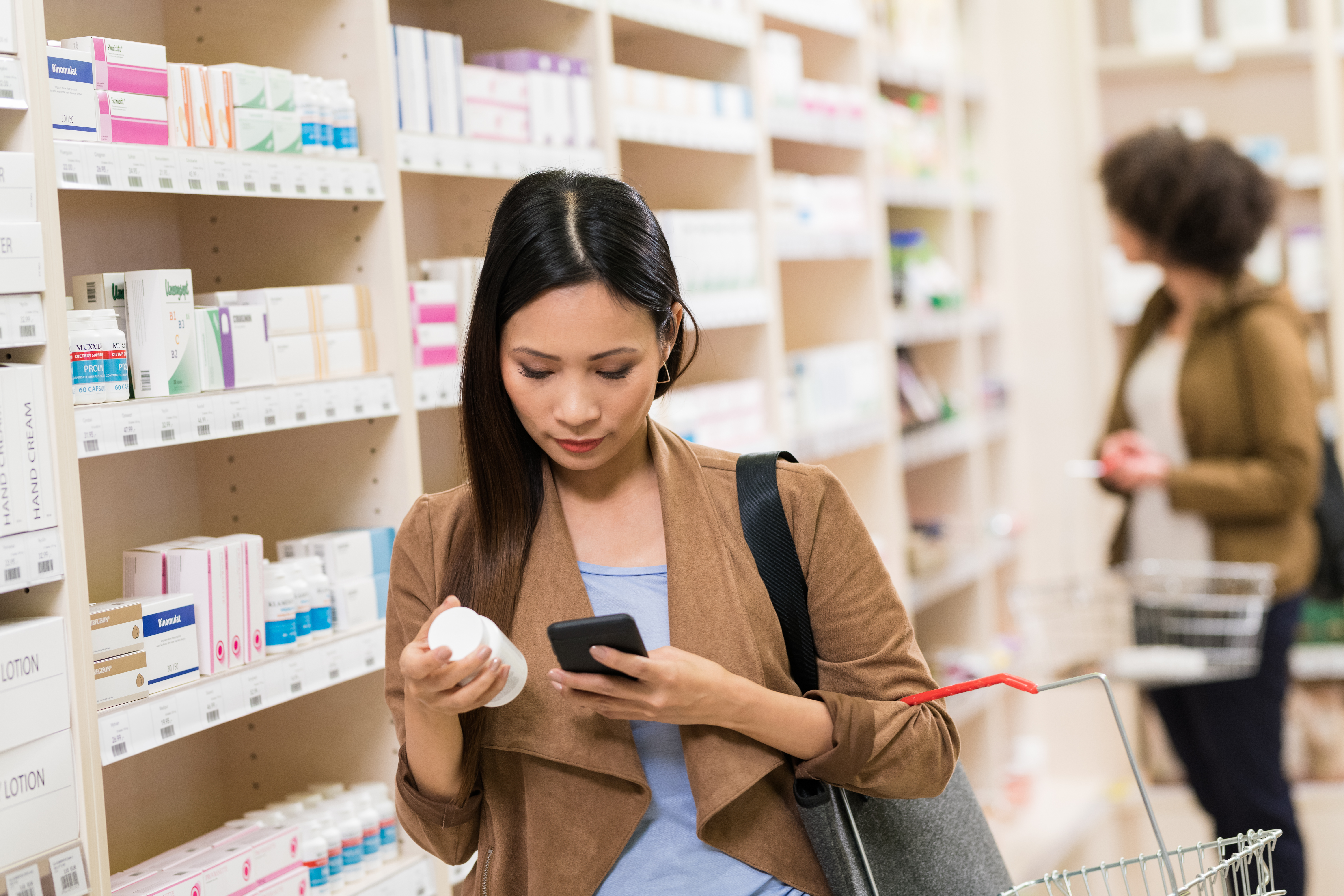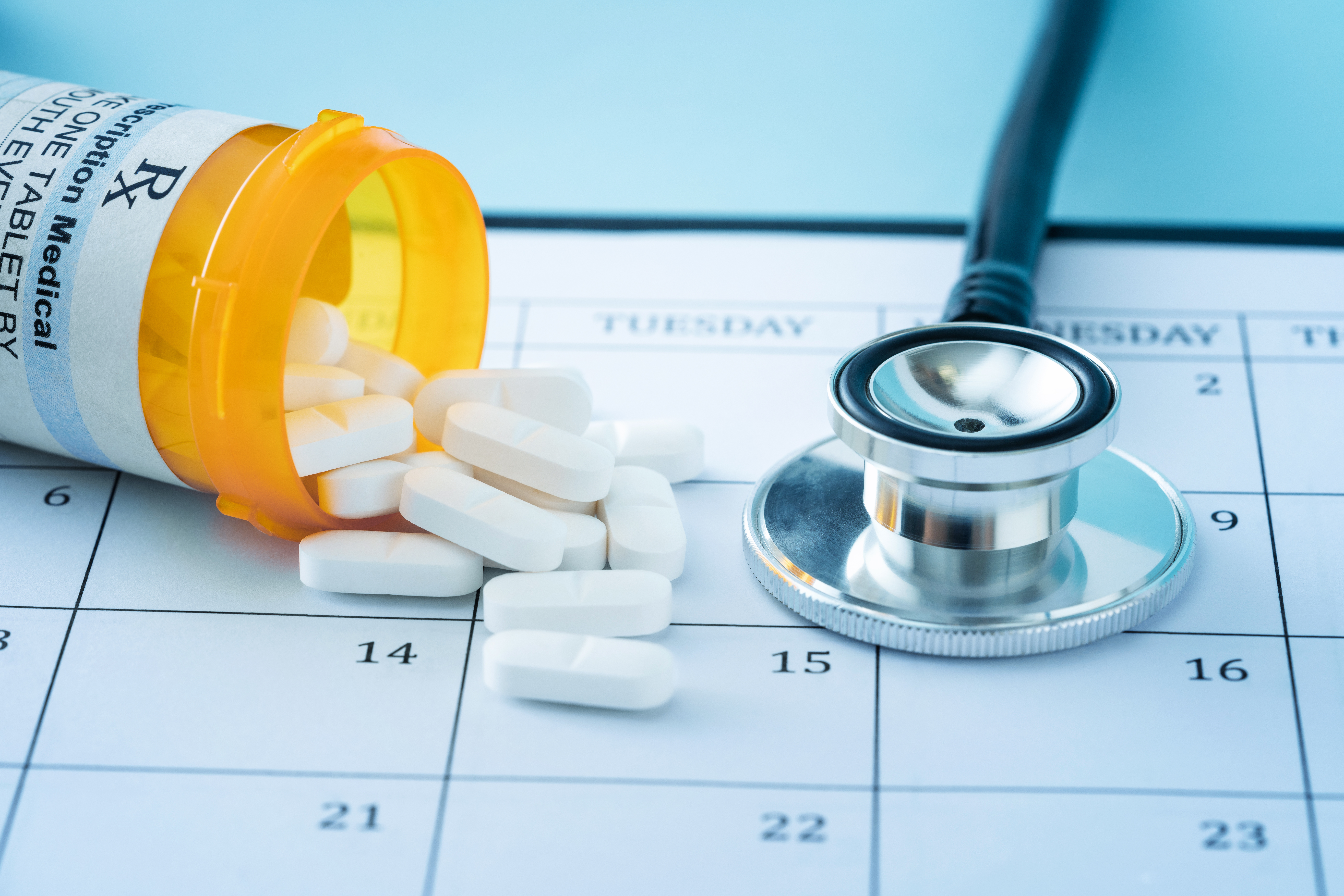Smart Packaging: Discover 3 Key Benefits for Pharmaceuticals
Written by Andrew Wong
Manager, Market Development
As we know, the primary purpose of packaging for prescription or over-the-counter (OTC) pharmaceuticals, vitamins, and supplements is to protect products as they move from production facilities to consumers and patients. While product protection remains a critical outcome, technology innovations have now expanded healthcare packaging’s traditional functions.
When packaging engineers and brand managers imagine what they can achieve with the help of new packaging technologies, it’s difficult to know where to start since the potential use cases, goals, and outcomes of product packaging have grown so significantly. What’s more, the technology itself can be confusing.
This article is intended to help those involved in the conceptualization and development of healthcare packaging understand the capabilities of packaging technologies and determine the best choices for their products, as well as for patients and consumers.

Leveraging smart packaging in healthcare: An elderly patient discusses his medication with a doctor during a virtual consultation.
Background
Traditional Versus Smart Packaging
The purpose of traditional packaging is to protect, promote, and preserve its contents. Traditional prescription packaging typically evokes images of an amber-colored bottle with a screw cap and a label with basic and limited information about the product. For OTC products, vitamins, and supplements, we see brand names, images, and product taglines used to compete for consumer attention on crowded retail shelves.
Over the past 20 years, the possibilities for packaging to “do more” began to emerge, and technology innovations were developed to support evolving outcomes. The applications for intelligent, or smart packaging, quickly grew.1
“Active packaging,” one of the first types of smart packaging, includes specific components built directly into a package or as a separate component, with the purpose of enhancing the performance of the overall packaging system. Examples include labels that contain special inks that shift color with defined temperature changes or desiccant packets that absorb moisture to extend the shelf life of products.

A customer uses her smartphone to interact with a medication bottle’s smart packaging features, enhancing her healthcare experience.
Connected packaging is a more recent innovation within the intelligent packaging space and has rapidly moved to the forefront of the healthcare packaging evolution. Simply put, connected packaging contains a mechanism that triggers an action on a compatible device. The mechanisms can be optical, like a barcode, or electronic, like an NFC tag. What’s exciting about connected packaging is the fact the latest versions of this technology are accessible to anyone with a smartphone.
Common examples of optically connected packaging used widely today include Universal Product Code (UPC) barcodes and Quick Response (QR) codes. Both contain information that can be optically scanned, such as Stock Keeping Unit (SKU) data that is registered and stored for managing stock and initiating action in the supply chain. QR codes can also contain text, like URLs, and trigger a webpage to open on a smartphone or tablet.
Electronic mechanisms for connected packaging involve components that are embedded in the package itself. These electronic components trigger an action or response when they interact with a compatible device. The component is usually low-powered, battery-free, flat, and flexible, lending itself to use in a wide array of packaging applications.
Radiofrequency identification (RFID) is a common example; the RFID technology tag is scanned by a special reader that triggers an intended activity. Near-field communication (NFC) labels or tags, which are a type of RFID technology, are both intelligent and convenient when applied to packaging, given they can be scanned by a smartphone to trigger an activity, like opening a webpage.
Smart Packaging Powered by the Internet of Things (IoT)
The IoT in packaging is the convergence of technologies, analytics, sensors, and systems to control and track physical objects. When healthcare packaging is intelligently connected to the IoT in packaging, it can be tracked from a manufacturing facility to the person consuming the product. Through this connection, valuable data can be collected that enables not only a better understanding of the product but also patient and consumer behavior.
Consider the power of smart packaging connected to the IoT in packaging as it reports its own location and status in the pharmaceutical supply chain. Is it moving, or in storage? If the latter, how long has it been idle? What environmental conditions did the product experience on its journey, and did they alter the quality of the product? The answers to these questions are invaluable for drug developers, product managers, and supply chain specialists.

An NFC tap triggers a diversion warning, showcasing how smart packaging technology enhances supply chain security and regulatory compliance.
Connected packaging can also help clinicians and drug innovators better understand patients and consumers by delivering information about the patient experience. This kind of packaging can answer questions like when and where the OTC product was purchased, its ultimate destination, where and when it was opened, and how much time elapsed between locations. For prescription medications, connected packaging can better inform the patient and serve a role in compliance.
This barely scratches the surface on ways smart packaging connected to the IoT in packaging can help healthcare product producers, and volumes could be written on its limitless applications. However, not every product is a good fit for connected packaging. In the next section, I will offer a framework to help you determine if, and what form of smart packaging is the right choice for your product.
Learn more about the Internet of Things (IoT) and how it applies to packaging in this video
When to Choose Smart Packaging
When determining if smart packaging is the right choice for your drug product, I would recommend beginning by defining your desired outcomes within the context of the product and the patient or consumer, while also considering macro trends in healthcare.
Outcome #1 – To Drive Continuous Supply Chain Improvement for Enhanced Patient and Consumer Safety
Considering macro trends in healthcare, a better understanding of patients and disease has driven the development of precision drug therapies that deliver better results. These therapies can be more valuable, and, in many cases, the patient populations are smaller. This has created a more complex pharmaceutical supply chain with a higher volume of expensive goods moving through it.
RFID’s long-range scanning capabilities enable instant identification and continuous monitoring of items throughout manufacturing, distribution, and sale by utilizing RFID scanners that can detect a large number of objects within a predetermined area—such as a warehouse, transport truck, or store. This form of smart packaging can help pharmaceutical companies enhance supply chain security, prevent diversion and anti-counterfeiting, improve efficiency, forecast more accurately, and validate purchases. Intelligent connected packaging equipped with RFID technology can not only communicate its location, but also alert us when product tampering has occurred, or if the product or packaging has been adulterated or compromised.

Smart packaging solutions ensure accurate medication schedules and improve patient outcomes.
For OTC pharmaceuticals, vitamins, and supplements, rather than waiting for periodic retail reports, product managers can use RFID technology to monitor purchasing trends in real-time. As this significant body of data is generated, improvements can be applied to make supply chains more efficient. Product forecasting and distribution plans can be more effective, and healthcare products will get into the hands of those who need them, when they need them most.
Outcome #2 – To Help Patients and Consumers Make Informed Decisions About Their Health, Promote Self-Care, and Enhance Adherence
Another rapidly growing healthcare trend is the desire for patients and consumers to be better informed about their care and to administer treatment from their homes. The COVID-19 pandemic has put the spotlight on self-care, although its popularity was rising beforehand.2 With many areas implementing stay-at-home orders, in-person doctor visits were cancelled, but of course, treatments needed to continue.
It’s also true some prescription medications require precise dosing protocols to achieve the best efficacy. Noncompliance and poor patient adherence have a significant and costly impact on healthcare, leading to higher morbidity rates and increased hospitalizations. It has been estimated that in the U.S. alone, the estimated annual cost of prescription drug-related morbidity and mortality resulting from non-optimized medication therapy was $528.4 billion, equivalent to 16% of total U.S. healthcare expenditures in 2016.3

A patient scans a package with smart packaging technology using a smartphone, demonstrating the seamless integration of digital solutions in everyday logistics.
Intelligent connected packaging can improve compliance and patient adherence by delivering an enhanced patient experience, including convenient access to internet resources that introduce the brand, explain the protocols, review potential side effects and contraindications, and offer an option to receive dosing reminders.
Outcome #3 – To Gain New Insight into the Patient and Consumer Journey for Decision-Making
Healthcare product producers go to great lengths and invest significant resources to better understand the consumer experience as it relates to their products since this drives important insights for decision-making. That said, once a product is in the possession of a consumer or patient, it’s difficult to continue to gather data and engage with the consumer or patient throughout their ongoing journey with a product.
NFC labels or tags are data and engagement enablers – they allow brands to better assure, inform and engage consumers before and after purchase, as each label has its own unique identifier that creates real-time, item-level data.
For marketers, the fact an NFC tag can stay attached to product packaging throughout its lifecycle creates a channel for recurring and remote engagement with consumers outside of traditional methods. With every tap, contextual messaging can be provided to the patient or consumer. For example, scanning the label in-store could provide a message regarding an upcoming promotion, in addition to more detailed product information. Once the consumer or patient is at home, scanning the label could provide a recommendation on how to use and store the product, as well as the brand’s preferred e-commerce channels for reordering the product, which helps minimize brand switching.
Conclusion
The purpose of pharmaceutical packaging has evolved significantly over the past several decades. As the industry has imagined new and valuable outcomes that can be achieved through packaging, we have also seen innovative technologies evolve to support endless possibilities – and this can be overwhelming.
Traditional, active, and smart packaging, including connected packaging, each has specific capabilities that can play a role in achieving better drug delivery outcomes as they operate in the IoT in packaging.
When determining if smart packaging is the right choice for your drug product, it is valuable to begin by defining your desired outcomes within the context of the product and the patient or consumer, as well as consider macro trends in healthcare.
To read more about Jones Healthcare Group’s smart packaging offering, visit our Innovation Lab.
About the Author Andrew Wong
 Andrew is the Manager, Market Development at Jones Healthcare Group. He is responsible for evaluating and transforming emerging technologies into commercially viable packaging solutions that better serve consumers and patient outcomes.
Andrew is the Manager, Market Development at Jones Healthcare Group. He is responsible for evaluating and transforming emerging technologies into commercially viable packaging solutions that better serve consumers and patient outcomes.
Andrew is actively engaged in the greater active and intelligent packaging community, providing both leadership through publications and presentations, but also serving as a participant, looking for the next, new transformative technology.
-
The terms intelligent, smart, and active, are sometimes used interchangeably and these concepts continue to evolve.
-
a16z Podcast: the Return of Home-based Healthcare a16z Podcast: The Return of Home-based Healthcare - Andreessen Horowitz
-
Cost of Prescription Drug-Related Morbidity and Mortality. Watanabe, Jonathan H., McInnis, Terry and Hirsch, Jan D. Annals of Pharmacotherapy, Vol. 52(9) 829–837, 2018
